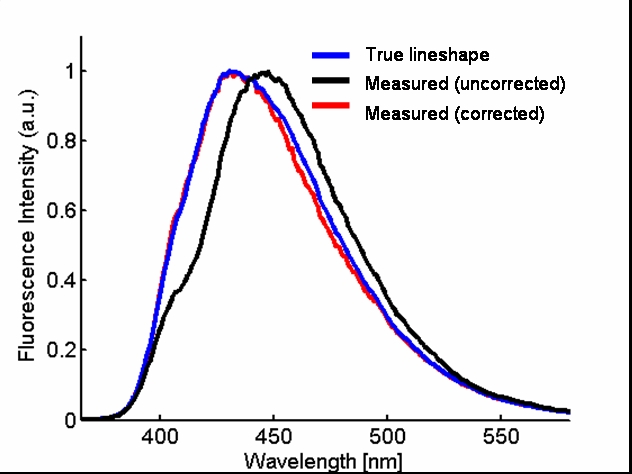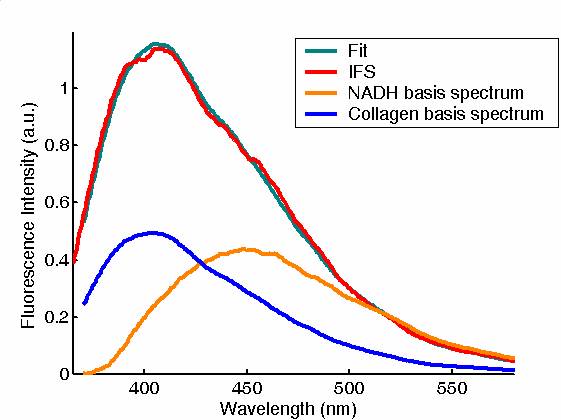Intrinsic fluorescence spectroscopy
Intrinsic fluorescence spectroscopy (IFS) provides quantitative
biochemical constituents. Key fluorescent tissue biochemicals include
NADH, collagen crosslinks, tryptophan, FAD, and prophyrins. Fluorescence
of these biochemicals is excited with laser light in the near UV
to blue wavelengths and collected via a fiber optic probe (see fastEEM).
A typical fluorescence emission spectrum is shown in Figure 1 (blue
line). However, because tissue absorbs and scatters light, the measured
emission spectrum can be highly distorted (Figure 1, black line).
We employ a photon migration model (Mueller et al. 2001, Zhang 2000)
to correct for these distortions and extract the true fluorescence
emission spectrum (Figure 1, red line). This undistorted fluorescence
spectrum is known as the intrinsic fluorescence spectrum.
Subsequently, the intrinsic fluorescence spectrum is used to extract
the basis biochemical components. For example, the two primary tissue
fluorophores when excited with 340 nm light are collagen crosslinks
and NADH. Their fluorescent spectra are shown in Figure 2 (blue
and orange lines, respectively). A linear combination of these two
basis spectra (Figure 2, green line) make up the intrinsic fluorescence
spectrum measured from the tissue (Figure 2, red line). In this
way, IFS quantitatively extracts the relative contributions of each
biochemical.
 |
 |
Figure 1. |
Figure 2. |
Recent Publications
- M. G. Muller, I. Georgakoudi, Q. Zhang, J. Wu, and M. S. Feld,
"Intrinsic fluorescence spectroscopy in turbid media: disentangling
effects of scattering and absorption," Applied Optics 40,
4633-4646 (2001).
- Q. Zhang, M. G. Muller, J. Wu, and M. S. Feld, "Turbidity-free
fluorescence spectroscopy of biological tissue," Opt. Lett.
25, 1451-1453 (2000).

|
 |